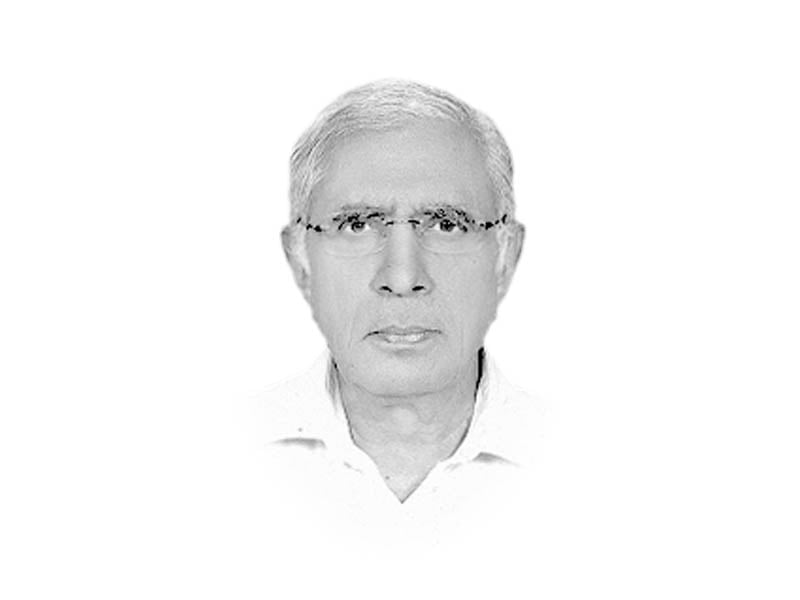
The first round: Pakistan’s economy grew at an annual average rate of over six per cent during 1955-65, reflecting largely the Korean War-related domestic economic boom, the Seato and Cento-related almost free supply of defence equipment, the generous US dole of wheat under PL480 and inflow of massive World Bank funds during the construction of the Tarbela Dam.
The second round: Between 1980 and 1988, the country once again grew at an annual average rate of over six per cent, thanks this time to the first Afghan War-related inflows. By the time this round ended, the country had received over $100 billion, all unencumbered, according to a rough estimate. But midway through 1988, one could see nothing on the ground to show where this huge amount had gone. The then caretaker finance minister, the late Dr Mehbubul Haq, had to rush to the IMF for a bailout package. The huge fiscal space that was generated during this period was again wasted on consumerism and if any planning for the future was made, it was all skewed. For example, when the bamboo-curtained socialist China was opening up its port city, Shenzhen, to the world, we were locking up our Karachi export processing zone. The main source of income continued to be ever higher import tariff rates and foreign dole. Foreign assistance had become such a permanent and important feature of our economy that once, when publicly confronted with the reality of increasing dependence on aid, Dr Haq claimed that the more the amount of dole, the higher it reflected on the level of confidence of the donors in our economic policies! And our then economic sage, the late Ghulam Ishaq Khan, was so unconcerned about the ongoing smuggling which was adversely affecting our manufacturing sector that once he publicly but indirectly approved of it, saying that there was nothing to be disturbed about because these goods were coming in without adversely impacting on Pakistan’s official foreign exchange reserves! The power sector was criminally neglected during this period and by 1986, for the first time in its life, Pakistan was firmly in the grip of massive power outages.
The third round: During 1999-2008, Pakistan once again grew at an annual average rate of over six per cent as the incoming largesse, related to our services rendered in the war against terrorism following the 9/11 tragic episode, had flooded our coffers. And the man who took over the country without asking anybody wasted three precious years in trying to build national consensus on the Kalabagh Dam, relegating all other important power (including the Bhasha Dam) and irrigation projects to lowest priorities. And so, darkness descended once again on the country at the end of the third “free lunch”.
The cost of each of the three “free lunches” when they ended quickly appeared in the shape of soaring population growth, massive drop in literacy rates, a huge slump in tax-to-GDP ratio and a widening gap between the haves and the have-nots. During the first round, the then government had ill-advisedly gone on a spree of import substitution under the protection of high tariffs. In the subsequent rounds, the governments of the day, it appeared, had mistaken the temporary boom and the donor-interest driven transient dole to be a permanent national economic feature and, therefore, paid no attention to the all-important task of planning for the future. Not only education, health and the demands of equity were criminally ignored but no thought was given even to resource generation.
Could we get out of this trap by shunning dole for good and adopting the Keynesian way out rather than going back to the IMF? A tall order, indeed.
Published in The Express Tribune, May 1st, 2013.
COMMENTS (9)
Comments are moderated and generally will be posted if they are on-topic and not abusive.
For more information, please see our Comments FAQ


































1714024018-0/ModiLara-(1)1714024018-0-270x192.webp)









@Author In your last line, "Could we get out of this trap by shunning dole for good and adopting the Keynesian way out rather than going back to the IMF?", could the word "Keynesian" be replaced by "Indian" to make it more appealing as it is a "live", next-door-neighbour's example? I tried to send you a personal mail of appreciation (below) but my message bounced from all possible permutations and combinations of your name with @tribune.com.pk at the end. ================My message================ I really liked your above-mentioned article. I had written on similar lines in my letter published by DAWN on 18th May 2008 (http://archives.dawn.com/2008/05/18/letted.htm#9). A Pakistani-Canadian Mr J S Hussain replied in support (http://archives.dawn.com/2008/05/24/letted.htm#8). As long as journalists like you write such articles and more and more people (and the political leadership) realize their mistakes, Pakistan has a bright future. Introducing myself, I am an Indian Metallurgical Engineer presently a Director of an Indonesian Steel Mill. I often write in comments below various articles of your columnists and I have translated some of these articles in Marathi, my mother tongue, with due permission of Tribune and most of the times the authors also (wherever their e-mail ID was available). Warmest regards and good luck for a sustained friendship between our countries, K B Kale
My letter in DAWN http://archives.dawn.com/2008/05/18/letted.htm#9 (published on May 18th 2008) says it all! A Pakistani-Canadian J S Hussian agreeed with me and wrote in response http://archives.dawn.com/2008/05/24/letted.htm#8 Hope my Pakistani readers of ET read both the letters which are very much applicable today as can be seen from the last line in this article "The Dole Trap" by the learned author M Ziauddin.
Good points, Sir. We have wasted so many opportunities and I see nothing that will change that.
Or lets stop distorting the economy and promoting inefficiencies through subsidies and unbalanced taxation.
Beautiful analysis! 100% true facts explained in the article. Pakistan Army has to make the biggest cuts in their budget in order to live within our means. That will never happen!
A balanced Op Ed addressing the serious issue with the foreign aid and its abuse. As we say "there are no free lunches". When our own budget is not spent on common people in Pakistan, why would a foreign country dole out billions to poor masses? Pakistan is a rich country with huge army, hundreds of WMD, active programs for drone and more weapons. Yet we have no money for education, healthcare, poverty, nutrition and other unimportant needs.
Easy come easy go to the DHA, perks, golf courses and high salaries and lion's share in the national budget that is never disclosed openly and honestly.
A great analysis of the malaise affecting Pakistan's economy and it is directly tied to the government's addiction to easy credit i.e. loans by the world bank and IMF. Rather than creating policies to improve the economy and increase revenue generation, the aim was to beg for ever more loans to tide over the country until.... exactly what ? The late Dr. Haq and GIK and others just kicked the can further down the road until their time ran out. Others took over and did the same. That is why the country is where it is at today. And now because of the utter lawlessness in the country, investors are reluctant to take the risk. A very sad state of affairs.
no wonder army homes and socities are so cool in pakistan and we got a-tech too with 100 billions $ but no public sector work ever done by any govt railway, pia, oil sctor, electricity every thing sinking.....